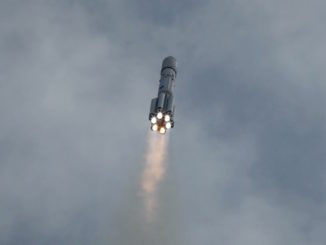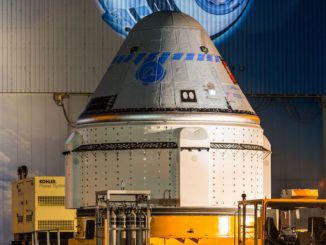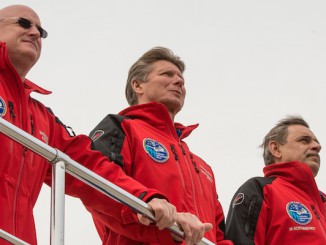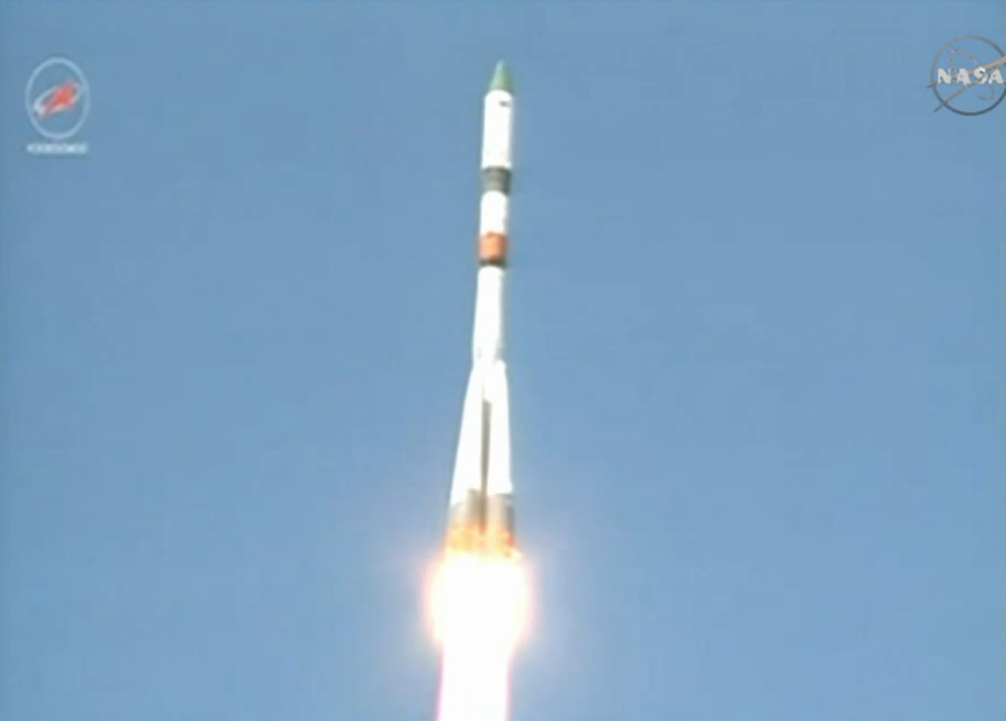
Russian ground controllers decided Tuesday to delay the docking of a Progress supply freighter to the International Space Station until Thursday after telemetry signals indicated two radar navigation antennas may not have deployed following the ship’s launch from Kazakhstan.
Bolted to the top of a Soyuz rocket, the Progress M-27M cargo craft lifted off at 0709:50 GMT (3:09 a.m. EDT).
The kerosene-burning Soyuz launcher released four first stage boosters two minutes after blastoff, then the rocket’s core stage switched off and fell back to Earth. A shroud covering the Progress supply ship jettisoned as the rocket’s third stage engine pushed the spacecraft into orbit.
The Soyuz rocket deployed the 16,069-pound Progress freighter less than nine minutes after launch.
The Progress M-27M supply ship was scheduled to begin a fast-track rendezvous with the complex, heading for docking with the space station’s Pirs module less than six hours after liftoff.
But Russian space station managers abandoned the plan after engineers were unable to confirm the deployment of two Kurs radar antennas via telemetry signals transmitted by the spacecraft, said Rob Navias, a NASA spokesperson providing commentary during NASA TV’s broadcast of the flight.
The Kurs radar system feeds navigation data to the Progress freighter’s computer during the ship’s automated final approach to the space station, giving information about the range and closing rate between the two spacecraft.
Ground teams planned to study the problem while the Progress retargeted docking with the space station Thursday at 5:03 a.m. EDT (0903 GMT) after a two-day rendezvous sequence, a flight profile commonly used on previous Russian resupply missions.
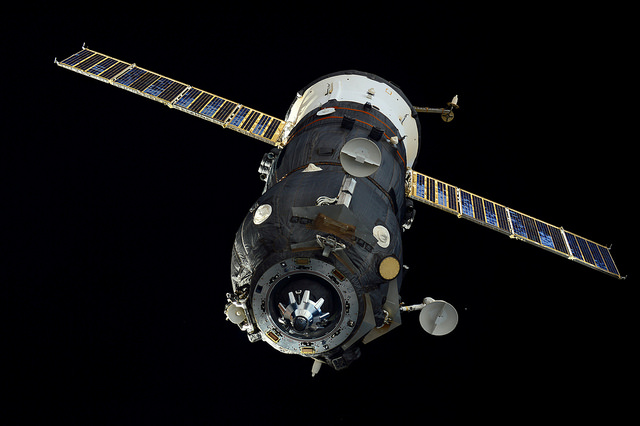
Once it docks, the new cargo craft will occupy the same port left open Saturday with the departure of an old Progress freighter with trash destined for a destructive re-entry over the Pacific Ocean.
Russian ground crews packed 2.6 tons of propellant, water, dry goods and oxygen inside the Progress M-27M spaceship, according to a manifest posted on the website of Roscosmos, the Russian Federal Space Agency.
The vehicle’s internal cabin holds 3,071 pounds of medical supplies, food rations, sanitary and hygiene items, experiments, tools to help future spacewalks, a current regulator for an electrical system and safety equipment. The Progress carries about 1,937 pounds of fuel to tweak the space station’s orbit and replenish propellant tanks aboard the lab’s Zvezda service module, 926 pounds of fresh water and more than 100 pounds of oxygen to supplement reserves for the space station’s atmosphere.
The supply load includes 253 pounds of provisions for the three astronauts operating the U.S. section of the space station. The research lab’s crew will unpack the Progress spaceship’s dry cargo.
Items stowed inside the Progress supply vessel will be used by the space station’s current Expedition 43 residents and a new three-man crew training for launch May 26.
The Progress M-27M spacecraft will remain docked to the space station around six months, which it will depart and burn up during re-entry to disperse the research lab’s trash.
The cargo mission took off aboard a modernized version of the Soyuz rocket with updated electronics and a digital flight control system. Russia previously used the newer Soyuz 2-1a configuration for a Progress launch in October, and the upgraded booster can loft 300 more kilograms — about 660 pounds — to the space station’s orbit, according to Roscosmos.
The upgraded Soyuz 2 rocket has launched Russian military satellites and commercial payloads into orbit since it debuted in 2004. The upgraded Soyuz rockets are also launched from the European-run Guiana Space Center in South America.
Future Progress resupply freighters will launch on a mix of the new Soyuz 2-1a booster and a legacy configuration of the rocket called the Soyuz-U.
Russia says launches of space station crews could be switched to the Soyuz 2-1a rocket once it is proven with cargo missions.
Follow Stephen Clark on Twitter: @StephenClark1.

